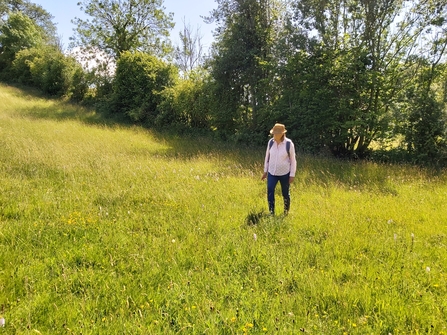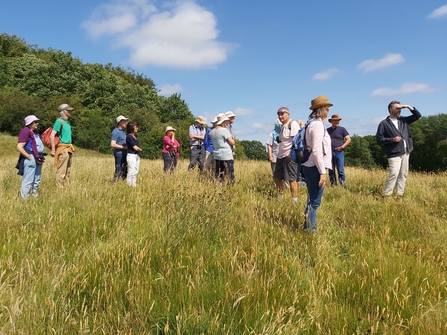A walk around Birches Farm Nature Reserve near Kington with volunteer warden Bob North on one sunny day in late June was like walking back in time. To a time when hay meadows were a patchwork of yellow, pink, white and purple before the cut. Where a multitude of insects such as bumble bees, solitary bees, butterflies and daytime flying moths fed on the nectar-rich wildflowers and grasshoppers jumped away as you walked through.
On a Discovery Day for Herefordshire Wildlife Trust members, Bob guided us through the collection thirteen small irregularly shaped fields pointing out the different wildflowers. There were masses of common spotted orchids, some of which have hybridised and grown much taller. The purple flowering knapweed seemed to coat some fields while in others selfheal and yellow rattle were more evident. Coppice field had pink betony and yellow dyer’s greenweed flowering amongst the bracken close to the wood. The diversity of different wildflower species seen on that one day delighted us all.



